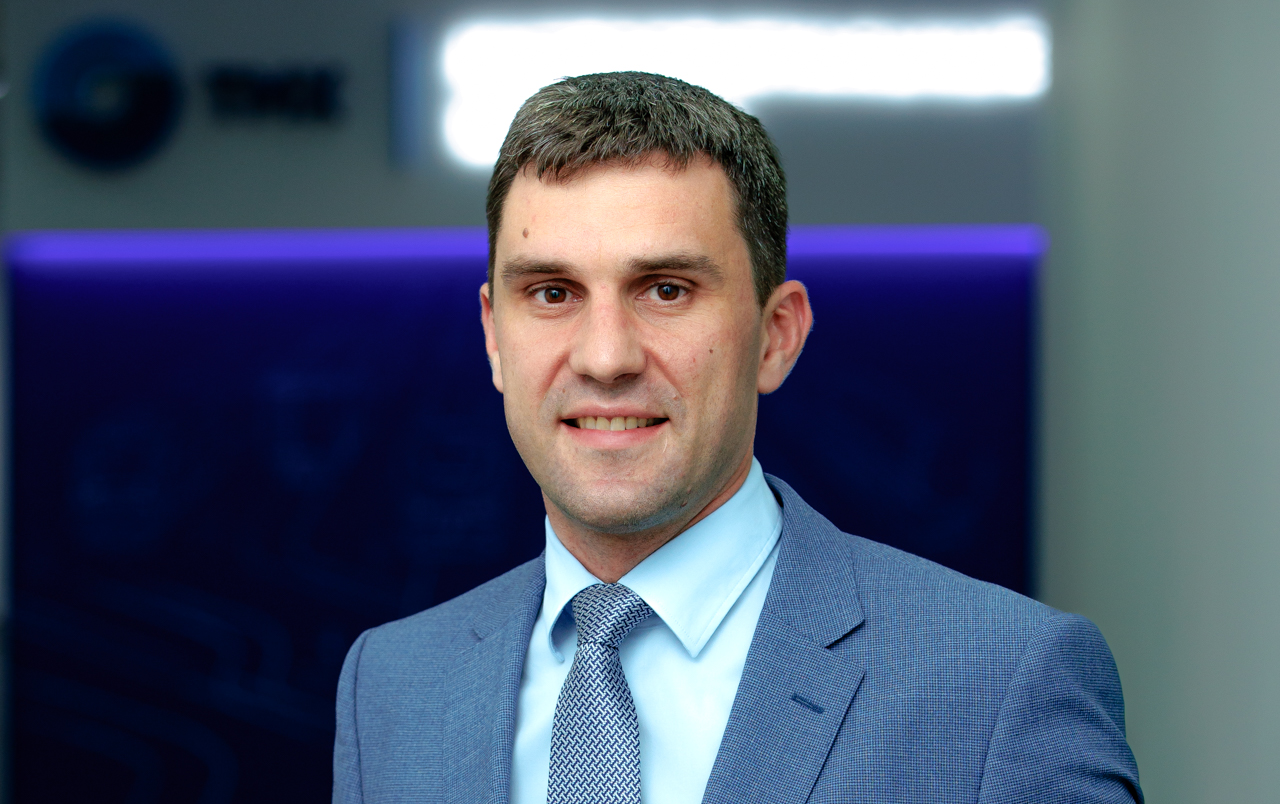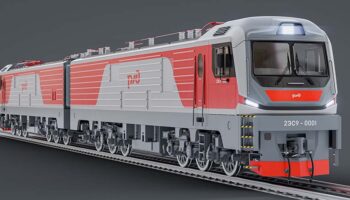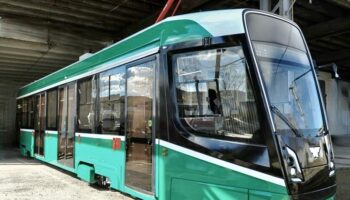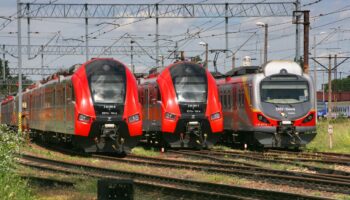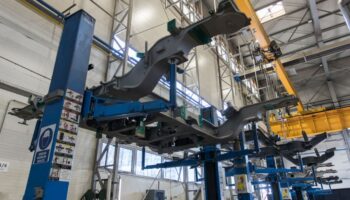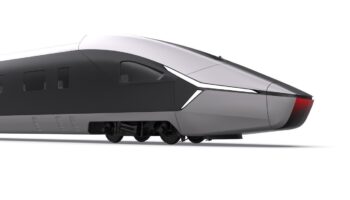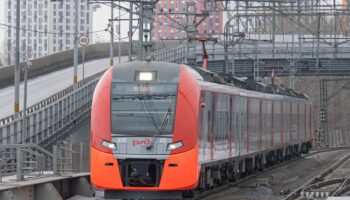Digital and automation solutions today are key for increasing the efficiency of railway operators and are one of the major factors for rolling stock manufacturers to get an advantage over competitors. The leader will be the one to offer the most effective integrated solutions for automation, accurate diagnostics and transportation efficiency growth. TMH, a top 5 global rolling stock manufacturer, is actively working in this direction. Andrey Romanchikov, Managing Director for the Intelligent Control Systems Development at TMH, CEO of TMH Smart Systems told ROLLINGSTOCK about the recent activities of TMH in the development of digital solutions.
Mr. Romanchikov, TMH Smart Systems was established 5 years ago. What key results have you achieved during this period?
I consider the creation of this technological direction as the main achievement. Today it plays an important role in the TMH negotiations with clients. A wide range of products and solutions for railway automation has been formed, and it allows TMH and LocoTech to provide products and services with new qualities and capabilities. TMH Smart Systems is already a group of companies now and includes well-known enterprises: AVP-Technology, RailNext, Transtelesoft and the Locomotive Electronic Systems (LES) company.
Today, it is important to consider that physical limits for rolling stock have already been reached in many respects: for example, metro trains can’t run much faster, we also can’t radically increase their capacity. At the same time, more efficient traffic control and automation systems make it possible to reduce the intervals between trains and thus increase the turnover and carrying capacity of transport systems, as well as energy efficiency, which is necessary for both the operator and its customers.
The largest global railway industry players, like Alstom and Siemens, have own signaling and onboard digital systems divisions to help their customers meet these challenges. The necessity to create in TMH such a division, focusing on maintaining the status of one of the world’s market leaders, was evident.
What market segment such integrated solutions, involving the supply of rolling stock and signaling systems, are mostly demanded in? What market share do they have?
Nowadays, such solutions are primarily implemented in light rail. They include not only the supply of railway vehicles and automation systems, but also the construction of infrastructure, maintenance throughout the life cycle, and sometimes operation. Almost all new projects of new metro, tram and monorail lines are developing in this way worldwide. According to my estimates, such projects now account for 30% of the global LRV market. The demand for an integrated approach and such turnkey solutions will definitely grow because it is more efficient for the customer.
 Andrey Romanchikov: “The demand for an integrated approach will definitely grow because it is more efficient for the customer”. The photo shows a TMH metro train in Kazan. Source: TMH
Andrey Romanchikov: “The demand for an integrated approach will definitely grow because it is more efficient for the customer”. The photo shows a TMH metro train in Kazan. Source: TMH
Is there a similar trend in rail transport?
There are not many projects in railway transport where a new line is being built from ground zero. Moreover, for example, in Europe, rolling stock fleets and infrastructure have different owners, which limits the possibilities for consolidation to make a turnkey order. At the same time, an integrated approach is in demand when it is planned to build a completely new railway line and there is a single decision-making center. For example, we see its implementation in high-speed rail projects in Egypt, industrial transportation in Australia and others.
This year TMH Smart Systems presented long-term strategy until 2026 in a rather succinct way. Could you tell us about its priority projects in more detail?
Firstly, it is a competence center for computer vision systems. The development of this technology is a strategic project for TMH. This center creates cross-platform solutions for all types of rolling stock because we see the economic effect of this for all types of transport. The key feature of this technology is that it only gets better every year due to machine learning and processing more data.
Secondly, these are onboard systems for automatic train operation (ATO), security, online data transmission, both diagnostic and controlling effects, via radio signal. All of them are aimed at ensuring the maximum level of transportation efficiency. The key project is the Virtual Coupling system, which we are currently developing and implementing together with NIIAS by a Russian Railways’ request. This technology has already been proven to provide a 15% increase in turnover on existing infrastructure that allows the customer to save on capital costs.
Thirdly, many ideas are in development for diagnostic systems for both rolling stock and infrastructure. The onboard diagnostic system is no longer just an addition to existing rolling stock. Today it is already a key locomotive system, comparable to control and safety systems. With its help, fundamentally new indicators of the reliability of the rolling stock can be achieved. It is getting possible to switch to condition-based maintenance.
So, now together with 10 companies and Russian Railways we have installed an onboard diagnostic system on a 2ES5K electric locomotive at the Kandalaksha depot of the Oktyabrskaya Railway. It will undergo a trial operation in severe climatic conditions for several months. The goal is to obtain in 2023 an onboard locomotive diagnostics system, which will enable online diagnostics of the rolling stock technical condition and predict possible malfunctions of key components. This project is of fundamental importance both for the development of TMH locomotive building competencies and for the service development at LocoTech.
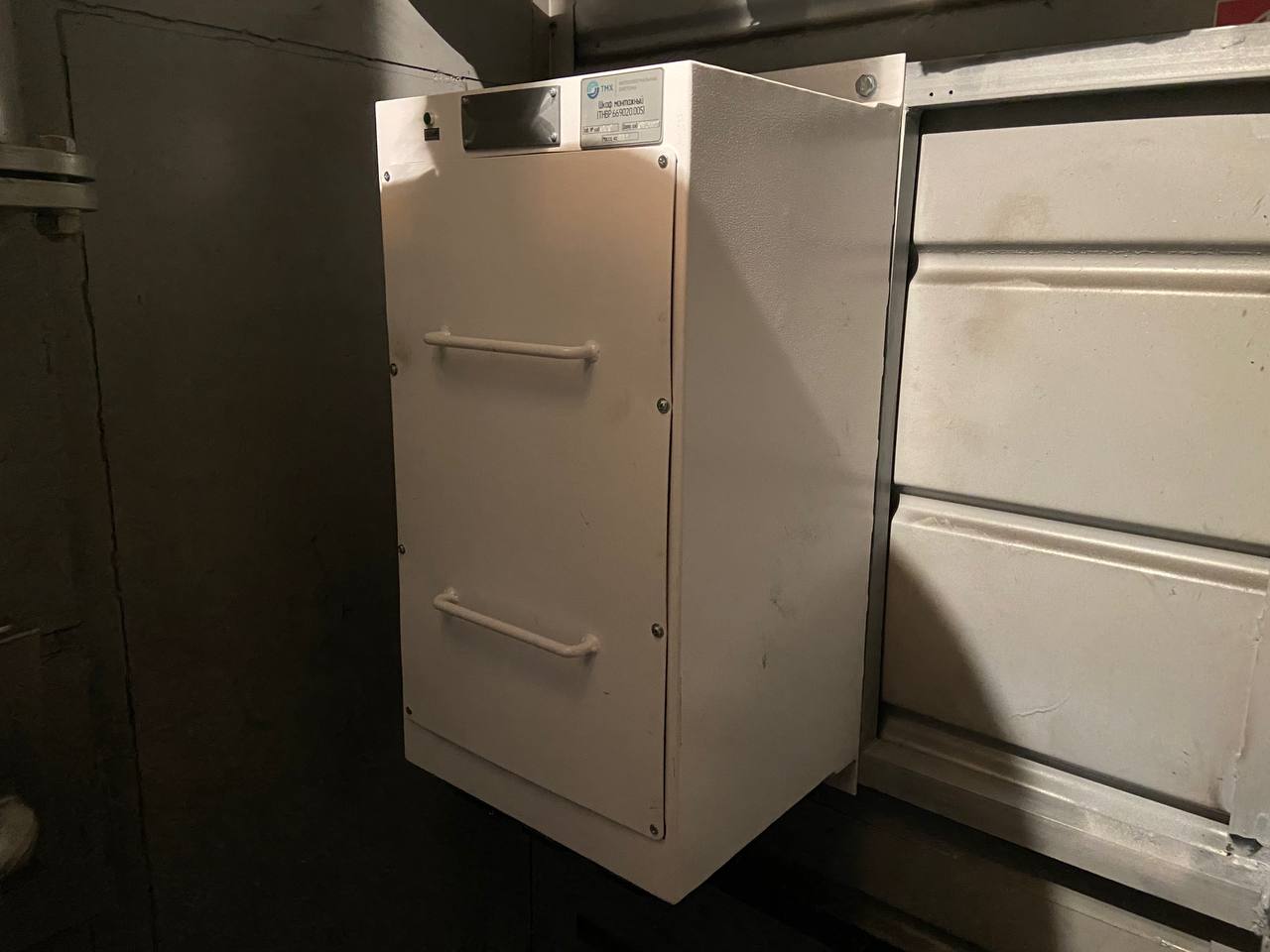 Andrey Romanchikov: “In 2023, we should receive an on-board diagnostic system for locomotives, which will diagnose its technical condition and predict possible malfunctions online”. The photo shows a TMH Smart Systems data rack with an on-board diagnostic system on a 2ES5K electric locomotive
Andrey Romanchikov: “In 2023, we should receive an on-board diagnostic system for locomotives, which will diagnose its technical condition and predict possible malfunctions online”. The photo shows a TMH Smart Systems data rack with an on-board diagnostic system on a 2ES5K electric locomotive
We continue to develop new technologies in the field of infrastructure automation, too. These are microprocessor systems of interlockings and track circuits, wireless control of switches, automation of tram traffic. In this direction, we have faced a serious challenge: we have always been standing by the ideology of technological sovereignty for our solutions, and now it is being tested in relation to sanctions and the departure of foreign suppliers from Russia. A number of local analogues have appeared, and this year the key task is to test and apply them in the future.
I would like to highlight the infrastructure solution project particularly, the idea of which was supported by the Moscow Metro. It assumes that sensor equipment will be installed on several passenger trains on the line for diagnosing the condition of the tracks and transmitting data online. Such a solution does not require significant investments or the purchase of separate equipment. We plan to bring the technology to mass production within a few years.
As a result, all these systems should also be integrated into the single complex solutions for abovementioned turnkey projects.
What engineering staff do you currently have to achieve these targets?
There are more than 900 people in TMH Smart Systems, and 185 of them are directly involved in R&D.
How is the project of an unmanned metro system in Kazan progressing?
We agreed with the city on the specification for the Second Metro Line. It includes the entire range of automation systems, including the installation of platform doors on boarding platforms to prevent passengers from access to the tracks where the automated train is operating. The project is underway, it will definitely be put in operation.
At the same time, unmanned metro technologies have been operating in the world for 40 years as robots in restricted areas. Can the computer vision technologies included in the GoA4 level make it possible to cut the cost of infrastructure construction?
There is an international standard where it is clearly stated that the infrastructure must be completely isolated for GoA4. At the same time, in fact, communication technologies are the key and most expensive element of the infrastructure for ATO, because it requires streaming video for remote control. I would like to make a point on Baltiets, the new TMH train for the St. Petersburg metro. Together with the Scientific Research Institute for Precious Mechanics (NII TM) we implemented the functionality of a fully automated move and target stop in it. The driver is only responsible for opening and closing the doors. This is the level of automation that is already available to our customers by default.
Is it possible to avoid, for example, platform doors installation? Possibly yes, but this is an even more complex and expensive technical solution since it requires computer vision not only on the rolling stock, but also at the station itself, and the interaction between them. It can be in demand, for example, at metro stations that are objects of historical heritage.
At the same time, for industrial railway transport or factory shunting operations, which are already isolated by themselves, the introduction of ATO is possible without significant infrastructure costs. Thus, the function of an automatic train driver as an option has already been included in the promising TEM23 shunter, which is currently completing certification trials.
About the TEM23 shunter with ATO system
How many miles has your computer vision system already covered?
The mileage is not so important, but such a parameter as the number of false responses is much more essential. Currently, our system shows one false response per 15 km of track. On this measure, we are already superior to other players, at least in Russia. The range at which the system can now detect obstacles is 600 m in a straight line, what is also at the level of advanced solutions. The reaction time is 200 ms, while for the average human it is 500 ms. The technology has been tested in various weather conditions of heavy rain, fog and snowfall.
Since August, the new Rules for the Technical Operation of the Railways in Russia have come into force. Among many adoptions, they include the possibility of the rolling stock operation in automatic mode. How significant is this addition in the regulatory framework of railway transport and what other regulatory solutions are needed to launch a large-scale implementation of ATO?
This is a really big step. Another serious challenge is the fact that new rules establish the developer’s and manufacturer’s responsibility for the safe and reliable operation of such systems.
What is missing? We hope that in the nearest future more detailed requirements for ATO will appear in the technical regulations of the Customs Union in the nearest future. Several standards have already been prepared and approved. It is equally important for reliability and safety requirements to be defined.
Is Russia leading or pursuing for computer vision systems technologies in the world?
There are good solutions both in our country and abroad. The systems have not yet been implemented on a large scale, but all players are in the final trial stages. It seems to me that the leader should be considered the one who can mass produce rolling stock equipped with a computer vision system to the market. We can already offer working solutions for industrial and mainline rail transport, as well as for metro.
What scale has the implementation of the Virtual Coupling system already acquired in Russia, and can this solution be in demand in other countries where traffic is not so intense?
The development of this technology and the demand from Russian Railways have led to the fact that it has already become essential for mainline locomotives by TMH. All new locomotives of the ES5K series produced are equipped with this system directly at the factory. Currently, 911 electric locomotives or 1822 sections are equipped with the Virtual Coupling system.
This technology is the most cost-effective way to increase turnover on an existing infrastructure if for some reason it is not possible to upgrade the infrastructure, which is always expensive. We see that the technology can be in demand in all markets of TMH presence.
About the Virtual Coupling system
How is your CTRL@SAFE train protection system developing?
We have now agreed with Russian Railways and NIIAS on a roadmap for the development of a new generation of these systems. The software will come from Russian Railways, the platform itself and the hardware will be from us. The modern system will have a modular architecture and scalable functionality. Integration with the CTRL@DRIVE automatic driving system will be optimally implemented, allowing the driver to use one monitor. Equipment reliability indicators will be significantly improved. The CTRL@SAFE system will perform its functions at all sections of rail track: with automatic, semi-automatic autoblocking, as well as while organizing trains traffic with moving block sections.
Both LocoTech and TMH’s partner, Ctrl2Go, have previously announced its activities on predictive analytics systems for rolling stock. What is the role of TMH Smart Systems in these projects?
TMH Smart Systems is the lead developer and builder of the entire complex. We are creating a system that will optimally carry out components diagnostics based on priorities to find the right solution for the improvement of rolling stock’s reliability. The principles embedded in the structure of the complex should ensure scalability and the necessary future enhancement of functionality. We cannot afford to end up with a patchwork of different systems from various vendors built at different times. The targets of TMH Smart Systems in this project are the requirements formation and management for the system as a whole and its components, the search for the best solutions available on the market, the compositions of the architecture and the direct development of key components, including software.
To what extent do the integration of intelligent systems increase the cost of rolling stock?
If we take the cost of these systems in comparison with the final cost of rolling stock, then it is measured by several percent. At the same time, the effects for the operator are more impactful. I have already told about significant savings in capital expenditures when implementing the Virtual Coupling system. Another technology, CTRL@DRIVE, has already proven the effects of an 8% reduction in fuel and electric energy consumption. Automation allows to transfer the driving of rolling stock to one person, which also has a positive effect on the customer’s economy. Diagnostic systems save on maintenance, and, of course, this has a positive effect on traffic safety.
What projects would you highlight in the area of signaling?
Now we are developing universal software, which could be used on any industrial controllers in order to completely remove dependence on their manufacturers.
We are implementing significant projects in Kazakhstan. So, now our CTRL@LOCK 400 computer-based interlocking (CBI) introduced at the Maylytogay station is being scaled. We are also implementing this CBI at such industrial facilities as coal mines and steel mills. In September 2022, the track section of the Yoshlik station at Almalyk Mining and Metallurgical Complex was equipped with CTRL@LOCK 200. Also, we are building a new interlocking post with CTRL@LOCK200 at the Bachatsky coal mine of the KRU company. It will allow connecting new railway tracks, to control switches and traffic lights.
The project of supplying track circuits for the Moscow Metro is important for us as well. It has high requirements for the reliability of the automation devices operation, and we are glad to be its providers.
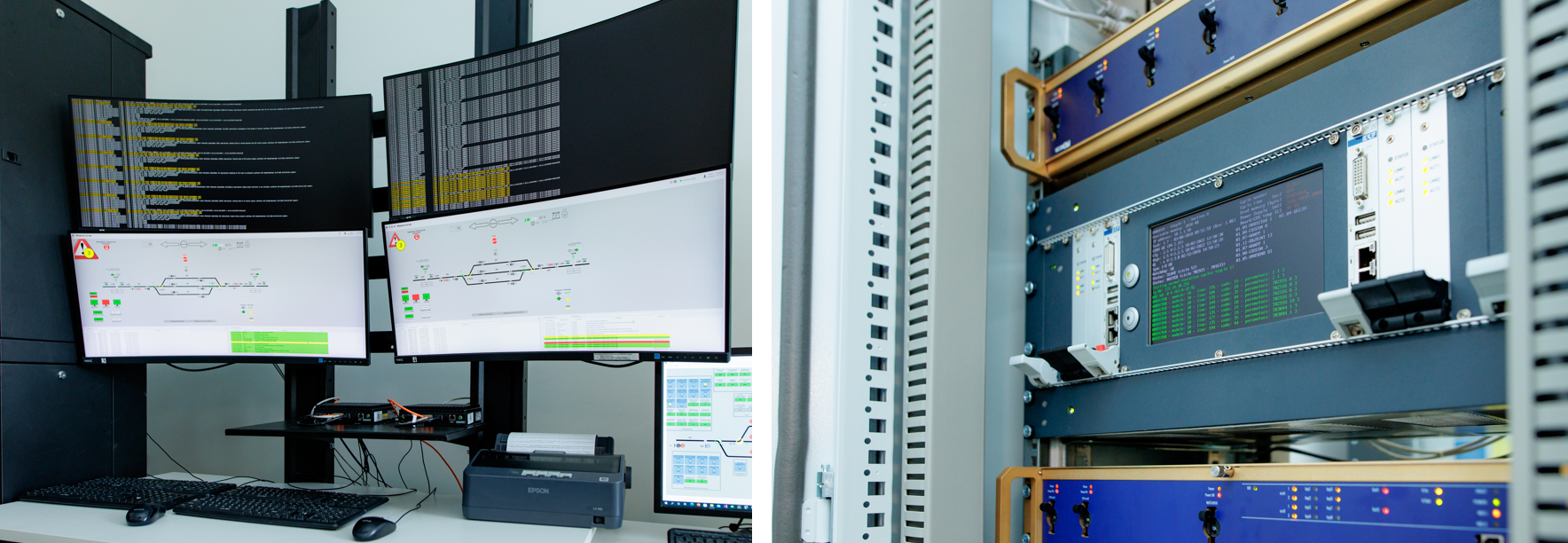 Andrey Romanchikov: “Our CTRL@LOCK 400 computer-based interlocking is being scaled now”. Source: TMH Smart Systems
Andrey Romanchikov: “Our CTRL@LOCK 400 computer-based interlocking is being scaled now”. Source: TMH Smart Systems
What other markets are you entering?
Our focus is also on the tram systems segment, too. We signed a license agreement with NII TM in spring. It is a leading manufacturer of automation systems for metro and trams. We plan to jointly develop and supply interlocking technologies for urban transport. We already have a number of agreed pilot projects.
To summarize, what top 3 advantages of your interaction with customers relative to competitors could you single out?
The first is that we can offer the customer a developed integrated product, which includes rolling stock, maintenance, automation and signaling systems. In respect with TMH scales, actually any customer request will be implemented. The second is a qualified team. We are talking about the competencies of both the holding company, and TMH Engineering, and our division. Thirdly, we keep our word and fulfill our obligations.
Interviewed by Sergey Belov
***
Profile
Andrey Romanchikov was born in 1983. Graduated from the Moscow State University of Railway Engineering (MIIT) with a degree in Automation, Telemechanics and Communications in Railway Transport. Ph.D in Engineering, author of more than 50 scientific publications. The entire professional career devoted to the railway industry. He took leading positions at Alstom Transport and Bombardier Transportation, joined the TMH team in 2017.
***
About companies
TMH

№ 1 among railway and urban rail rolling stock manufacturers in Russia & CIS, № 5 in the world. The company offers a full range of products and services: from new rolling stock design and development to modernisation, life cycle maintenance contracts and digital traffic control systems. TMH is a Russian company headquartered in Moscow with international subsidiaries in Switzerland, Egypt, Argentina, Belarus and Kazakhstan. The holding structure includes 12 production and assembly sites in Russia and other countries worldwide. TMH supplies passenger trains and coaches, metro cars, locomotives, engines, and components to railway operators and manufacturers in 30 countries. This year the company celebrates its 20th anniversary. Website: tmh.global
TMH Smart Systems Group
A partner of TMH, produces integrated systems that ensure the automated operation development, as well as the effective interaction and control of rolling stock and infrastructure. The Group is present in 5 countries. TMH Smart Systems incorporates 2 research laboratories and 2 competence centers for autonomous and computer vision technologies. Website: tmhsmart.ru



